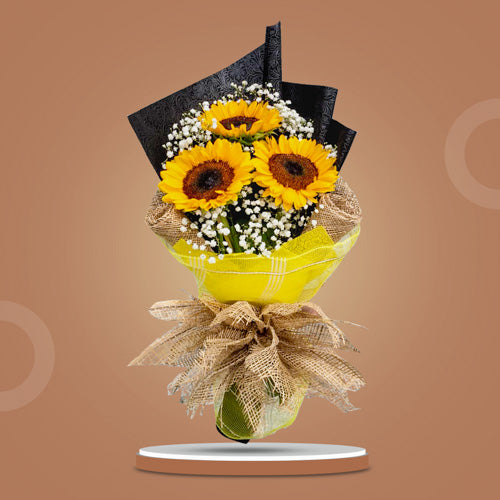A Brief History of Gerbera
The gerbera, a non-fragrant flower belonging to the Asteraceae genus, originates from enchanting destinations like South Africa, Asia, South America, and Tasmania. With approximately thirty distinct varieties found in their natural habitat, this captivating flower was first encountered in 1737 by Gronovius, a renowned botanist from Leiden. Allow us to share fascinating insights into the rich origins of the gerbera.
The History of Gerbera
The Leiden botanist bestowed the flower with the name "gerbera" in honor of his esteemed colleague, Traugott Gerber. Around 150 years later, this exquisite blossom found its way to Great Britain and, shortly after, graced the shores of the French Riviera. However, it wasn't until 1950 that the cultivation of gerberas commenced in the Netherlands, a decision that proved to be immensely fruitful. Today, the Netherlands stands as one of the foremost gerbera-producing nations, solidifying its position as a key player in the industry.
Light and Warm
The Netherlands, a leading producer of gerberas, boasts an impressive annual yield of 900 million flowers encompassing a remarkable array of 600 distinct variations in color, shape, and size. Undoubtedly, this popularity is well-deserved. Originally a quintessential summer flower, the gerbera thrives under the gentle caress of sunlight and warmth. In our state-of-the-art greenhouses, we meticulously craft an environment that mimics the ideal conditions of summer, even during the winter months, by carefully controlling lighting and moisture levels. This allows us to replicate the essence of summer throughout the year.
New varieties, many colors
The fascinating process of creating novel gerbera varieties is commonly referred to as breeding, achieved through the technique of hybridization. This method yields a remarkable assortment of gerberas in diverse colors and variations. Some gerberas exhibit captivating characteristics such as two-toned hues or a gradual transition from one color to another. Here's an intriguing fact: gerberas are composed of numerous diminutive flowers. The outer petal-like flowers, resembling delicate ribbons, contribute to the overall shape of the flower. Meanwhile, at the center, the heart of the gerbera comprises cylindrical clusters of tiny flowers. Notably, the heart can display two distinct colors: vibrant green or deep black.
Cheerful birth flowers
Gerberas have earned the distinction of being recognized as birth flowers, and it's not surprising considering their inherently cheerful nature and the wide array of vibrant colors they exhibit. These delightful flowers have the remarkable ability to captivate bees with their charm while instinctively tilting their faces towards the sun, basking in its radiant warmth. It's no wonder they have established a well-deserved reputation as a symbol of joy and happiness. With their availability in a kaleidoscope of hues, gerberas truly embody the essence of cheerfulness.



